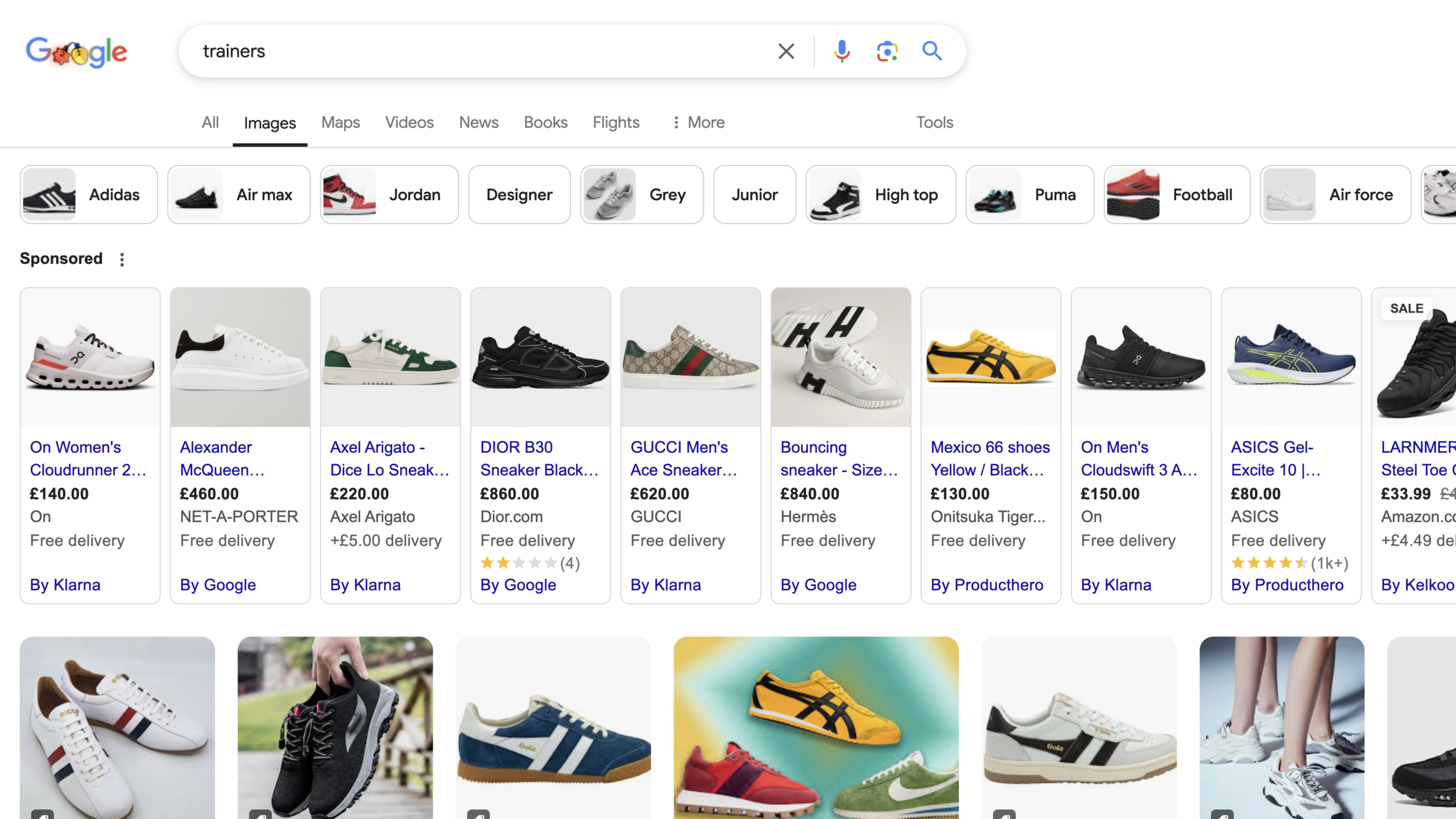This blog post will cover essential tactics in the world of ecommerce marketing, including using social media, optimising your website for improved user experience and effectively utilising PPC services. Readers will learn how to tackle common challenges, such as low engagement and ineffective marketing communications. By engaging with these insights, business owners can enhance their brand image and elevate their online presence, ultimately leading to enhanced conversion rates and increased sales.
Utilise Social Media Marketing to Boost Engagement

Creating shareable content that resonates with a target market is essential for boosting engagement through social media. Using targeted ads can effectively reach specific demographic groups, enhancing customer lifetime value. Engaging with followers fosters community loyalty, while influencer marketing expands reach. Lastly, analysing web analytics helps refine strategies, ensuring consistent updates keep the audience informed and engaged.
Create Shareable Content That Resonates With Your Audience
Creating shareable content that resonates with the audience involves understanding their interests and preferences. By leveraging tools like drag and drop website builders, businesses can design visually appealing posts that capture attention. This approach is particularly effective when integrating personalised elements, as tailored content tends to receive higher engagement across social media platforms, which directly contributes to overall ecommerce success.
Utilising inventory management software can enhance the content strategy by providing insights into popular products and emerging trends. This data allows businesses to craft campaigns that highlight these key items, making it easier to create relevant and relatable material. For example, showcasing new arrivals or seasonal products with engaging visuals can prompt followers to share these posts, expanding brand visibility and reach.
Incorporating interactive features within social media posts can also drive engagement and shareability. By encouraging audience participation, such as polls or contests, businesses create opportunities for users to engage meaningfully with the brand. This strategy not only fosters a sense of community but also increases the likelihood that followers will share the content, thereby amplifying the marketing efforts and reaching potential customers effectively.
Use Targeted Ads to Reach Specific Demographic Groups
Targeted ads are an effective strategy for reaching specific demographic groups within the expansive ecommerce landscape. These ads allow ecommerce marketing companies to tailor their messaging to customer segments based on behaviour, interests, and purchasing history. This precision not only improves campaign efficiency but also increases the likelihood of engagement, essential for driving conversions.
Utilising data analytics, businesses can refine their targeted advertising approaches by leveraging customer testimonials. Showcasing positive experiences from relevant demographic groups creates trust and credibility, making potential buyers more receptive to ecommerce web offerings. This strategy enhances connections with audiences who feel understood and valued by the brand.
Additionally, by utilising platforms’ advanced targeting tools, companies can ensure their ads reach the right audience at the right time. This approach maximises the return on investment, enabling ecommerce brands to allocate resources effectively while fostering meaningful relationships with customers. A focused advertising strategy empowers brands to consistently meet the needs of their ideal audience, driving sustained success in the competitive ecommerce marketplace.
Engage With Followers to Build Community Loyalty
Engaging with followers on social media offers ecommerce brands an opportunity to build community loyalty through genuine interactions. Brands that actively respond to customer inquiries or feedback create a sense of connection that resonates with potential buyers. Incorporating emerging technologies, such as chatbots on platforms like Klaviyo, can facilitate real-time communication, ensuring customers feel valued and understood.
Social media marketing plays a crucial role in fostering relationships that drive long-term loyalty. By sharing user-generated content, businesses can further enhance engagement, showcasing how customers use their products in everyday life. This strategy not only encourages more followers to interact but also elevates brand credibility when consumers see real experiences shared by their peers, especially on mobile devices like smartphones.
Additionally, creating engaging content tailored to the audience’s interests is key to maintaining ongoing interactions. Brands can leverage insights from development analytics to understand follower preferences and adjust their messaging accordingly. By regularly hosting polls or interactive campaigns, businesses can encourage participation and strengthen community bonds, ultimately leading to increased customer retention and advocacy.
Leverage Influencer Partnerships for Broader Reach
Leveraging influencer partnerships has become a vital strategy for ecommerce businesses seeking to expand their reach and drive engagement. Collaborating with influencers who align with a brand’s value proposition can help businesses tap into new audiences while enhancing brand credibility. For example, a fashion retailer may partner with a popular fashion blogger to feature their products during live streaming sessions, showcasing how items fit into everyday life.
Moreover, platforms like Omnisend can facilitate campaigns that integrate influencer content, allowing brands to deliver cohesive messaging across various channels. Influencers often possess a dedicated following that trusts their recommendations, making them powerful advocates for a business’s products. By utilising search engine optimization techniques, brands can optimise content shared by influencers to increase its visibility online, ultimately driving more traffic to their ecommerce site.
Additionally, effective influencer marketing goes beyond occasional posts; it can encompass collaborations that include giveaways or exclusive promotions tailored to the audience. This approach creates a strong call to action, encouraging followers to engage with the brand and enhancing customer loyalty. By building these strategic partnerships, ecommerce businesses can not only elevate their online presence but also create meaningful connections with potential customers, leading to long-term success.
Analyse Social Media Metrics to Refine Strategies
Analysing social media metrics is a crucial practice for businesses seeking to refine their marketing strategies for a Shopify store. By evaluating data such as engagement rates, reach, and audience demographics, decision-makers can identify which content resonates most with their audience. This insight enables marketers to adjust their messaging and tailor their propositions to align better with customer preferences, ultimately leading to improved performance and a more efficient budget allocation.
Furthermore, tracking metrics associated with the logo’s visibility and brand recognition within social media campaigns provides valuable feedback. For example, if a company notices increased engagement with posts prominently featuring their logo, they may decide to incorporate it more frequently in future marketing materials. This kind of analysis not only bolsters brand identity but also assists in creating a consistent online presence that fosters customer loyalty.
Ultimately, leveraging social media analytics helps businesses make informed decisions that drive ecommerce success. By continually assessing their social media efforts, companies can adapt to changing trends and user behaviour, ensuring marketing strategies remain relevant and effective. This approach not only increases overall engagement but also enhances the overall impact on sales and customer satisfaction.
Consistently Post Updates to Keep Audience Informed
Consistent updates on social media play a pivotal role in enhancing user experience by keeping customers informed about new products, promotions, and brand developments. Regularly sharing content directly engages followers, making them feel connected to the brand and more likely to return. For example, ecommerce businesses can showcase new arrivals or feature sales within their cart functionality to encourage immediate purchases, ultimately leading to increased customer satisfaction.
Utilising mobile marketing strategies allows brands to deliver timely updates that reach customers on their preferred devices. Formulating campaigns that use visuals, such as 3D modelling, can captivate the audience’s attention while providing a clear understanding of products. This technique proves effective in driving engagement and ensuring that followers are kept up to date with the latest offerings and trends in the ecommerce space.
Moreover, maintaining a consistent posting schedule demonstrates reliability, which fosters trust among followers. By actively communicating updates, brands can address customer questions and concerns swiftly, enhancing overall satisfaction. This transparent approach cultivates a loyal customer base that values the brand’s commitment to keeping them informed and engaged in their shopping journey.
Implement Email Marketing Campaigns Effectively
Implementing effective email marketing campaigns is key to driving sales and engagement in ecommerce. Segmenting the audience allows for tailored content, while eye-catching newsletter designs attract attention. Compelling subject lines can boost open rates, and personalising messages based on user preferences fosters connection. Exclusive offers incentivise purchases, and monitoring analytics ensures continuous improvement in advertising strategies, ultimately enhancing overall performance.
Segment Your Audience to Tailor Content Accordingly
Segmentation of the audience is crucial for effective email marketing campaigns in ecommerce. By categorising customers based on their behaviours, preferences, and demographics, businesses can tailor their messages to resonate more strongly with different segments. For example, a furniture retailer might send targeted emails featuring special promotions on modern designs to younger audiences, while offering classic or vintage styles to older customers, leading to improved engagement rates.
Utilising data from a content delivery network can help identify customer preferences and buying patterns. This allows ecommerce businesses to analyse which products are most popular or which types of content – such as podcasts or blog features – are driving the most interest. By understanding these trends, companies can create highly relevant email campaigns that highlight popular assets and drive conversions.
Moreover, segmenting customers based on their interaction with an app store can enhance the effectiveness of email marketing. For instance, customers who frequently browse a furniture app may respond well to exclusive offers or early access to new arrivals. This tailored approach not only increases the chances of purchases but also fosters a sense of loyalty as customers feel valued and understood by the brand.
Design Eye-Catching Newsletters to Grab Attention
Designing eye-catching newsletters is pivotal for ecommerce businesses aiming to capture the attention of potential customers. By integrating vibrant visuals alongside concise messaging, companies can entice readers to engage with promotions and new products. When highlighting payment options like debit card acceptance, a well-structured newsletter can effectively communicate convenience and accessibility, encouraging subscribers to take action.
The logistics of a well-crafted email campaign revolve around ensuring that the design is mobile-responsive. As many users access emails via mobile devices, optimising the layout helps mitigate frustration and increases the likelihood of conversions. Linking to a relevant landing page that offers exclusive deals not only capitalises on subscriber interest but also enhances the overall experience by providing easy navigation directly from the newsletter.
Furthermore, newsletters can utilise social media insights to resonate with the audience and prompt engagement. Incorporating trending topics or popular products can turn a simple email into an engaging narrative that captures attention. By treating the newsletter as an investment in customer relationships, ecommerce businesses can foster a sense of connection, driving buyers back to their site while reinforcing brand loyalty.
Use Compelling Subject Lines to Increase Open Rates
Compelling subject lines are vital for enhancing open rates in email marketing for ecommerce businesses. With the average open rate for promotional emails hovering around 20%, employing effective storytelling techniques can attract recipients’ attention and compel them to engage. A well-crafted subject line should spark curiosity while clearly conveying the email’s value, prompting recipients to click through to the web page.
Using statistics can also significantly boost engagement. For instance, including the number of exclusive deals or limited-time offers in the subject line can create a sense of urgency and encourage recipients to act quickly. Ecommerce marketers should consider segmenting their mailing list to tailor subject lines based on customer behaviour, ensuring the content resonates with diverse audience preferences and increases the likelihood of improved open rates.
Moreover, a/B testing different subject lines provides practical insights into what captures the audience’s interest most effectively. By analysing which approaches lead to higher engagement, ecommerce businesses can refine their strategies accordingly. Consistently implementing these techniques ensures ongoing improvements in email performance, ultimately contributing to greater success in the competitive ecommerce landscape.
Personalise Messages Based on User Preferences
Personalising messages based on user preferences requires a deep understanding of customer behaviour. By implementing a quiz that gathers insights on customer interests, brands can tailor their email campaigns to ensure content resonates with individual subscribers. This approach not only increases engagement but also builds a stronger relationship between the brand and its customers, ultimately driving sales.
Employing the latest algorithm developments can further enhance personalisation efforts. For instance, analysing past purchasing data enables businesses to recommend products aligned with customer preferences. Including infographics that highlight personalised promotions can make emails more visually appealing while emphasising relevant offers, thereby fostering customer loyalty.
Utilising social media interactions, such as tracking popular hashtags, can provide additional insights into customer interests. Brands can leverage this information to create customised email content that speaks directly to current trends and preferences. This strategy ensures that communications remain relevant, increasing the likelihood of recipients taking action and enhancing overall ecommerce success.
Include Exclusive Offers to Incentivise Purchases
Incorporating exclusive offers in email marketing campaigns can significantly boost revenue for ecommerce businesses. By offering time-sensitive discounts or special promotion codes, brands can create a sense of urgency among potential buyers. This approach encourages immediate action, leading to increased purchase rates and higher overall sales performance.
Utilising marketing automation tools can streamline the implementation of these exclusive offers. For example, businesses can schedule emails with personalised incentives based on customer behaviours, ensuring the content resonates with the target audience. By integrating artificial intelligence into their marketing strategies, ecommerce brands can analyse customer data, allowing them to tailor exclusive offers effectively and enhance engagement.
Additionally, online retailers can benefit from building strong connections with their customers through exclusive offers shared via email. When customers feel valued and appreciated through special deals, they are more likely to become repeat buyers. This strategy not only enhances loyalty but also cultivates long-term relationships, essential for sustained growth in the competitive internet marketplace.
Monitor Analytics to Assess Campaign Performance
Monitoring analytics is fundamental for assessing the performance of email marketing campaigns. By conducting regular audits of key metrics such as open rates, click-through rates, and conversion rates, a company can gain valuable insights into how effectively their content creation and copywriting strategies resonate with their audience. This data allows businesses to fine-tune their messaging and overall approach, ensuring that their efforts yield maximum return on investment.
Furthermore, analysing user engagement data helps identify trends in customer behaviour that supports enhanced content creation. For instance, understanding which types of subject lines attract more opens can directly influence future copywriting strategies. A company can also evaluate aesthetics, such as layout and design, to determine their impact on user engagement, adjusting elements to align with viewers’ preferences.
Finally, leveraging analytics tools enables a company to make data-driven decisions that improve campaign effectiveness. By systematically monitoring this data, a business can pinpoint successful tactics while identifying areas requiring improvement, ultimately driving greater success in their email marketing initiatives. This ongoing process fosters an adaptive marketing strategy that evolves alongside customer needs and preferences.
Explore Content Marketing to Drive Traffic

Content marketing plays a pivotal role in driving traffic for ecommerce businesses. Creating a blog with valuable insights ensures customers receive helpful information, while using SEO techniques enhances visibility on search engines. Engaging video content captivates audiences through music and augmented reality features. Sharing customer testimonials builds trust, and collaborating on guest posts reaches new audiences. Integrating content across various platforms ensures consistency and maximises impact.
Create a Blog With Valuable Insights for Customers
Creating a blog with valuable insights for customers serves as a powerful tool in the competitive market of ecommerce. Businesses can share trends, product usage tips, and industry news that resonate with their audience, establishing authority in the world wide web. By incorporating search engine optimisation (SEO) strategies, including targeted keywords such as “Google Shopping,” companies can enhance their online visibility and attract potential customers searching for relevant information.
Utilising platforms like WordPress allows for easy integration of a blog into an existing ecommerce site, offering a seamless user experience for visitors. Additionally, implementing marketing automation techniques can streamline the distribution of blog content, ensuring that insights reach the right audience at optimal times. This strategic approach fosters ongoing engagement, keeping customers informed and connected to the brand.
Encouraging customer interactions through the blog, such as comments and questions, provides further opportunities for engagement. Businesses should address common pain points and offer solutions, cultivating a loyal readership that values the shared insights. Ultimately, a well-maintained blog not only drives traffic to an ecommerce site but also builds lasting relationships with customers, enhancing overall business success.
Use SEO Techniques to Enhance Visibility on Search Engines
Utilising effective SEO techniques is crucial for enhancing a business’s visibility on search engines, ultimately driving traffic to an online store. By optimising keywords related to resources, businesses can improve their ranking, making it easier for potential customers to find them during searches. For example, a web developer can implement strategies such as targeted keyword integration, structured data markup, and local SEO to ensure the website attracts relevant visitors actively looking for specific products or services.
Responsive web design plays a significant role in retaining the traffic generated through SEO efforts. Websites that are mobile-friendly often rank higher on search engines. A poor user experience on mobile devices can lead to higher bounce rates, which negatively impacts search rankings. Therefore, ensuring that an online store is designed responsively not only enhances usability but also supports SEO tactics, making it crucial for ecommerce success.
Incorporating SMS marketing alongside robust SEO strategies can be an effective way to engage customers further. For instance, an effective campaign can direct potential buyers to valuable content, such as blog posts or product pages, thereby increasing traffic and driving sales. By combining these techniques, businesses can create a well-rounded marketing approach that captures interest and fosters customer loyalty.
Develop Video Content to Engage Visually
Developing video content is a powerful way to engage audiences and enhance the effectiveness of ecommerce design. By incorporating visually appealing videos on a great ecommerce website, businesses can demonstrate products in action, providing potential customers with an immersive experience. This interactive approach addresses common consumer pain points, such as uncertainty about product usability, thereby guiding them through the buying process at critical touchpoints.
Utilising a reliable website builder enables businesses to seamlessly integrate video into their online platforms, enhancing user experience and driving traffic. For instance, an ecommerce site targeting customers in London might showcase local products through vibrant video content, making the brand more relatable and trustworthy. This type of engagement fosters a connection with the audience, encouraging them to explore more of the site.
Moreover, video content can serve as a central piece in an overall marketing strategy. By sharing videos across social media platforms and embedding them in email campaigns, businesses can maximise their reach and retention rates. Captivating videos not only keep potential buyers engaged but can also lead to increased conversion rates, proving to be a crucial aspect of a successful ecommerce model.
Share Customer Testimonials to Build Trust
Sharing customer testimonials has become a powerful strategy for building trust on any ecommerce platform, particularly within sectors like beauty. By showcasing real experiences from satisfied clients, businesses can enhance their ecommerce site design and effectively address the concerns of potential buyers. Testimonials serve as social proof, showcasing the value and quality of products, which ultimately helps to reduce bounce rates as users feel more confident in their purchasing decisions.
For ecommerce businesses, integrating testimonials into web design can significantly impact user engagement. Placing success stories prominently on the homepage or product pages ensures that visitors encounter positive feedback early in their browsing journey. By using a telephone or chat option for direct communication, businesses can also encourage potential customers to ask questions, further solidifying their trust and interest based on client experiences shared through testimonials.
Utilising customer feedback not only builds trust but also fosters a sense of community around the brand. When users witness others sharing their positive experiences, they are more inclined to perceive the brand as credible and reliable. This increase in trust can lead to higher conversion rates, as well as repeat business, making it essential for ecommerce brands focusing on sectors like beauty to incorporate written and video testimonials into their digital marketing strategies.
Collaborate on Guest Posts to Reach New Audiences
Collaborating on guest posts presents a powerful avenue for ecommerce businesses to connect with new audiences. By identifying relevant platforms and contributing valuable content, brands can exhibit their expertise while reaching potential customers who are actively seeking ecommerce solutions. This strategy not only enhances brand visibility but also establishes authority within the industry, driving traffic back to the best website to sell products.
Engaging in guest post collaborations can amplify a brand’s reach through the adoption of omnichannel strategies. By leveraging diverse content platforms, businesses can ensure a consistent message across multiple channels. Furthermore, incorporating backlinks to their own sites within these guest posts facilitates improved SEO, making it easier for users to discover services such as Shopify email marketing or specific product offerings.
Ultimately, this tactic encourages ongoing relationships within the ecommerce community. By utilising automation tools for tracking and nurturing partnerships effectively, brands can optimise their guest posting strategies over time. This proactive approach not only generates increased traffic but also fosters a more engaged audience, ultimately contributing to long-term success and growth in the competitive online marketplace.
Integrate Content Across Various Platforms for Consistency
Integrating content across various platforms is essential for maintaining a cohesive brand identity, especially in ecommerce. When customers interact with different touchpoints, from social media to email marketing, consistent messaging reassures them about the brand’s reliability. By aligning content strategies with onboarding experiences, businesses can create a seamless journey that guides customers effectively, ensuring they understand the unique value offered by bespoke products.
The use of high-quality photography plays a crucial role in this integration. Visual content should resonate across platforms to reinforce the brand’s message, making it easier for potential buyers to connect with the innovative aspects of the business model. When users consistently encounter striking visuals and clear messaging, their trust in the brand grows, increasing the likelihood of conversion.
Moreover, leveraging technology to distribute content allows ecommerce businesses to engage with their audience more effectively. By implementing a centralised system, brands can ensure content remains consistent while addressing specific customer needs and preferences. This strategic approach not only optimises outreach but also fosters community and loyalty, as customers feel more connected to a brand that understands and meets their expectations across all platforms.
Leverage Pay-Per-Click Advertising for Quick Results

Leveraging pay-per-click (PPC) advertising can significantly enhance ecommerce success by driving immediate traffic to web pages. Key strategies include researching keywords to target ideal consumers, crafting compelling ad copy to attract clicks, and adjusting bidding strategies based on campaign performance. Implementing retargeting ads can re-engage past visitors, while testing different ad formats will optimise responses. Finally, analysing metrics ensures continuous improvement in ad effectiveness, contributing to long-term sustainability in marketing efforts.
Research Keywords to Target Your Ideal Customers
Researching keywords is essential for ecommerce businesses aiming to optimise their pay-per-click (PPC) advertising campaigns. Understanding the specific terms and phrases that potential customers use when searching for products enables companies to design a more effective strategy. This targeted approach increases the likelihood of attracting the right audience to the design site, ultimately enhancing lead generation efforts.
Using specialised software that identifies trending keywords can streamline the keyword research process. These tools allow businesses to analyse search volumes and competition levels, providing insights that inform their PPC campaigns. By strategically incorporating these keywords into their ad copy, ecommerce brands can ensure they resonate with their community, fostering higher engagement rates and ultimately driving conversions.
Incorporating long-tail keywords into PPC strategies is another effective way to reach ideal customers. These specific search phrases often have less competition, making it easier for businesses to rank higher in search results. By focusing on the nuances of customer language and preferences, an ecommerce business can enhance its visibility and connect more authentically with potential buyers, leading to increased sales and brand loyalty.
Craft Compelling Ad Copy That Attracts Clicks
Crafting compelling ad copy is crucial for capturing attention in the competitive landscape of pay-per-click advertising. Businesses must focus on highlighting key elements such as product benefits and unique features that resonate with potential customers. For example, when promoting print on demand services, emphasising customisation options and quick turnaround times can significantly enhance the customer experience, motivating users to click on the ad.
To maximise engagement, ad copy should incorporate relevant keywords that align with customer search intent. Terms like “currency” should be strategically integrated when discussing payment options or special offers, ensuring potential buyers feel secure in their transaction methods. Additionally, recognising the rising trend of mobile commerce enables businesses to tailor ad messaging for users accessing content via smartphones, ensuring the copy reflects this shift.
Utilising platforms like messenger apps can further amplify ad reach and effectiveness. By creating compelling copy that encourages users to click in order to receive exclusive deals or updates, brands can enhance their visibility within these channels. Such direct engagement not only fosters a stronger connection with the audience but also motivates them to explore products related to their interests, ultimately driving higher conversion rates and establishing long-term brand loyalty.
Adjust Bidding Strategies Based on Campaign Performance
Adjusting bidding strategies based on campaign performance is essential for maximising the effectiveness of pay-per-click advertising in ecommerce. By regularly monitoring key metrics such as click-through rates and conversion rates, businesses can identify which keywords and ad placements deliver the best results. For instance, Magento users may discover that specific search engine keywords generate higher engagement, allowing them to allocate their budget more effectively to enhance overall marketing performance.
Benchmarking against industry standards provides valuable insights into how a business’s bidding strategies compare to competitors. By analysing successful campaigns, ecommerce operators can identify optimal bid amounts that reflect current market conditions. This data-driven approach not only ensures cost efficiency but also helps businesses stay competitive in their respective fields, attracting more customers to their websites.
Furthermore, implementing dynamic bidding strategies lets businesses adjust their bids in real-time according to performance metrics. This flexibility enables operators to capitalise on high-performing ads while decreasing investment in underperforming ones. As companies refine their approach, they can optimise return on ad spend, ensuring their marketing efforts translate into tangible results and contributing to long-term ecommerce success.
Use Retargeting Ads to Re-Engage Past Visitors
Retargeting ads provide a valuable opportunity for ecommerce businesses to reconnect with past visitors who showed interest without completing a purchase. By displaying tailored ads to these users across various platforms, brands can efficiently remind them of the products they viewed, thereby increasing the chances of conversion. This approach often employs advanced technology, such as an API, to manage customer data and deliver ads based on previously tracked interactions.
The effectiveness of retargeting lies in its ability to utilise insights gathered from initial user research. For example, a Shopify marketing agency can analyse website behaviour to determine which products or categories engaged users the most. By presenting these items again through targeted ads, businesses create a personalised experience that encourages users to return and finalise their purchases.
Furthermore, integrating retargeting ads with content marketing strategies can amplify results. By combining engaging content with compelling ads, brands provide additional value to potential customers. For instance, incorporating informative blog posts related to showcased products alongside retargeting efforts creates a well-rounded campaign that resonates with users, reinforcing their interest and driving higher conversions in the competitive online market.
Test Different Ad Formats for Optimal Response
Testing different ad formats is essential for optimising pay-per-click (PPC) campaigns, particularly for businesses in competitive sectors like cosmetics. By examining various formats, such as text ads, display ads, or video ads, online retailers can determine which style generates the best engagement and conversion rates. For example, a Shopify marketing strategy that incorporates visually appealing image ads can effectively captivate potential customers, leading to increased sales opportunities.
Upselling can be seamlessly integrated into these ad formats by showcasing complementary products alongside main offerings. By crafting targeted ads that highlight these upsell opportunities, businesses can increase the average order value, making each transaction more profitable. A well-placed ad might direct users to a cosmetics page featuring a bundle that includes a foundation and a matching concealer, enhancing the overall shopping experience while boosting revenue.
Utilising analytics tools to track the performance of different ad formats can guide businesses in making data-driven decisions regarding their PPC strategies. By monitoring URL click-through rates and conversion metrics, retailers can identify which formats resonate most with their target audience. This iterative approach allows ecommerce brands to refine their campaigns and adapt to consumer preferences, ultimately driving success in their digital marketing endeavours.
Analyze Metrics to Improve Ad Effectiveness
Analysing metrics is essential for ecommerce businesses looking to refine their pay-per-click (PPC) advertising campaigns. By closely examining key performance indicators such as click-through rates, conversion rates, and customer engagement levels, companies can identify what resonates with their audience. For instance, if a business partnered with a popular payment processor like Allbirds notices high traffic but low conversions, adjustments can be made to their website design or ad copy to enhance the user journey.
Utilising data analytics tools effectively allows businesses to gain deeper insights into their ads’ performance. By monitoring how well different ads perform, brands can adapt their strategies to align with consumer preferences. For example, integrating a chatbot can help answer customer queries in real-time, improving the overall customer experience and potentially increasing conversions through ads that feature this technology.
Moreover, tracking metrics related to VAT compliance can provide valuable insights into potential cost-saving opportunities in advertising. By understanding how pricing impacts customer decisions, brands can optimise their offers to match audience expectations. This strategic approach to monitoring and analysing PPC campaigns ultimately leads to improved ad effectiveness, supporting ecommerce success in competitive markets.
Optimise Your Website for Enhanced User Experience

Optimising a website for enhanced user experience is crucial for ecommerce success. Improving page loading speed helps reduce bounce rates, while mobile-responsive designs ensure better accessibility, particularly during busy seasons like Christmas. Streamlined navigation allows quick product searches, and high-quality images elevate product displays. Clear calls to action guide users effectively, and a seamless checkout process is essential to increase conversions through ppc services.
Improve Page Loading Speed to Reduce Bounce Rates
Improving page loading speed is a critical aspect of optimising a website for users looking to make quick purchases. Slow pages can frustrate potential customers, leading to an increased bounce rate as users abandon the site in favour of a competitor. Ecommerce businesses that conduct competitor analysis may find that faster-loading websites tend to attract and retain more customers, thus leading to enhanced online sales performance.
As page responsiveness improves, users can navigate through various sections more effectively, boosting their overall satisfaction. This seamless experience can also encourage customers to return in the future, perhaps enrolling in a loyalty program as a sign of engagement. Ecommerce platforms should also consider optimising images, streamlining code and improving server responses to enhance their page speed further.
Moreover, a faster page loading speed plays an essential role during the checkout stage, especially when integrating various payment options. Customers are more likely to complete their transactions if they do not encounter delays or frustrations. Implementing strategies that enhance speed will result in a smoother customer journey, ultimately translating into higher conversion rates and increased revenue for the business.
Use Mobile-Responsive Designs for Better Accessibility
Designing an ecommerce store with mobile-responsive features is vital in today’s marketplace, as a significant portion of online shoppers access websites through mobile devices. An understanding of mobile user behaviour reveals that these customers tend to seek quick, accessible experiences. If an ecommerce store fails to deliver a seamless mobile experience, potential buyers may look elsewhere, leading to lost sales opportunities.
Incorporating mobile responsiveness helps ensure that website elements adjust appropriately to different screen sizes, enhancing overall accessibility. This improvement fosters more meaningful engagement with users, as they feel catered to while navigating the ecommerce store. Additionally, integrating features like social proof, such as customer reviews or ratings, becomes more effective when displayed correctly on mobile formats, ultimately increasing trust and boosting conversion rates.
Furthermore, optimised mobile designs not only improve user experience but also support affiliate marketing efforts. Affiliates often drive traffic to ecommerce stores through social media platforms, which many users access via their mobile devices. Thus, an ecommerce store that prioritises mobile responsiveness can leverage this traffic effectively, ensuring users receive a consistent experience across all devices and encouraging them to complete transactions seamlessly.
Streamline Navigation for Quick Product Searches
Streamlined navigation is essential for ecommerce success, as it directly influences the user’s ability to find products efficiently. Incorporating clear categories and subcategories helps customers quickly access items they wish to purchase. When users can navigate a site effortlessly, they are more likely to continue shopping, thus increasing the potential for sales conversions.
Utilising effective keyword research can enhance navigation by aligning product categories with the terminology customers use during their searches. For instance, integrating options like “Amazon Pay” as a payment method can make users feel more comfortable and prompt them to complete transactions. Additionally, optimising links throughout the site fosters link-building opportunities that can improve search engine rankings, driving more traffic to the platform.
Ensuring that essential items, such as gift cards, are easily accessible via navigation menus can significantly improve user satisfaction. An efficient navigation structure not only aids customers but also encourages repeat visits. When users understand how to locate products quickly, they are more inclined to return, building brand loyalty and enhancing overall customer experience.
Incorporate High-Quality Images for Product Displays
Incorporating high-quality images into ecommerce platforms, such as Shopify stores, is essential for creating an appealing online presence. Clear and attractive visuals not only showcase products effectively but also enhance the overall shopping experience. When customers encounter high-resolution images, they perceive greater credibility, which can lead to increased trust and higher conversion rates.
Users are more likely to engage with products when they can view detailed images from various angles. This approach allows potential customers to evaluate items comprehensively, reducing uncertainty and leading to informed purchasing decisions. Furthermore, integrating high-quality images with interactive features, such as a zoom button or 360-degree views, can provide shoppers with a dynamic experience, compelling them to explore the offerings further.
Moreover, leveraging stunning product visuals can significantly impact the point of sale by encouraging immediate purchases. By strategically placing high-quality images in key areas of the website, ecommerce owners can stimulate buyer interest. This strategy not only drives sales but also contributes to building a loyal customer base, as shoppers appreciate browsing through visually rich and engaging content during their online shopping journey.
Implement Clear Calls to Action to Guide Users
Clear calls to action (CTAs) serve as crucial navigational tools in the ecommerce landscape. By strategically placing CTAs, businesses can guide potential customers towards desired actions, such as completing a purchase or signing up for a newsletter. For instance, a well-designed merchandise display on a BigCommerce store should include buttons like “Buy Now” or “Add to Cart,” which enable users to move through the purchasing process seamlessly.
The effectiveness of CTAs can significantly be enhanced through careful consideration of typography and colour choices. Using contrasting colours and clear fonts ensures that these buttons stand out against the background, capturing the attention of users at critical moments in their shopping journey. Coupled with insights drawn from customer data, businesses can tailor these prompts to specific segments, ensuring that the messaging resonates with the audience’s preferences and behaviours.
Engaging an ecommerce PPC agency to optimise CTA strategies can further increase conversion rates. These agencies bring expertise in tailoring ad campaigns that incorporate effective CTAs, making them integral to driving traffic to an ecommerce website. By employing clear and compelling CTAs in ads and on-site merchandising, businesses can cultivate a more satisfying and efficient user experience, ultimately leading to enhanced revenue and customer loyalty.
Ensure a Seamless Checkout Process to Increase Conversions
A seamless checkout process is a crucial element in driving conversion rate optimization in ecommerce. When customers encounter complicated payment procedures or excessive steps, they are more likely to abandon their shopping carts. Implementing streamlined checkout options, such as guest checkout and saved email information, can significantly enhance user experience and reduce friction, leading to increased completed transactions.
It is also beneficial to offer multiple payment options tailored to customer preferences. This flexibility can accommodate different shopping habits and customs among various consumer groups. By providing popular payment methods and ensuring a straightforward, intuitive interface, online retailers can create a more inviting checkout experience that encourages shoppers to finalise their purchases.
Furthermore, clear communication during the checkout process is essential. Displaying transparent shipping costs, estimated delivery times, and return policies upfront helps to set realistic expectations. This clarity not only reassures shoppers but also bolsters trust in the brand, making it more likely for customers to convert and return for future shopping, thereby supporting the broader marketing strategy aimed at fostering customer loyalty.
Foster Customer Loyalty Through Excellent Customer Service

Timely responses to customer inquiries, loyalty programmes for repeat buyers, and fostering opportunities for feedback are essential elements in nurturing customer loyalty. Flexible return policies enhance satisfaction, while personalised interactions strengthen relationships. Additionally, using data to anticipate customer needs ensures brands remain relevant, particularly on platforms like an ecommerce website builder such as Squarespace. These strategies positively influence customer retention and drive ongoing sales.
Provide Timely Responses to Customer Inquiries
Providing timely responses to customer inquiries is a critical aspect of ecommerce that significantly impacts customer satisfaction and loyalty. When businesses promptly address questions or concerns, they demonstrate their commitment to customer service. This strategy not only reduces frustration but also positively influences the customer’s perception of the brand, encouraging repeat purchases and enhancing overall engagement.
Effective email marketing campaigns can greatly assist in managing timely communications with customers. By leveraging automation tools, ecommerce businesses can ensure that responses are quick and relevant, addressing customer needs while maintaining an organised approach to inquiries. Monitoring metrics such as open and response rates through tools like Google Analytics helps refine these interactions, ultimately leading to improved customer relations and higher retention rates.
This proactive customer engagement can also be aligned with strong inventory control practices. When companies keep customers informed about product availability or shipping times, it contributes to a seamless shopping experience. By anticipating customer needs and providing clear information, businesses can turn inquiries into leads, fostering loyalty and establishing a reliable reputation in the competitive ecommerce landscape.
Implement a Loyalty Programme to Reward Repeat Buyers
Implementing a loyalty programme can significantly enhance customer retention strategies for ecommerce businesses. These programmes incentivise repeat purchases by rewarding customers with points, discounts, or exclusive offers. For instance, an online retailer might use a tiered system that encourages shoppers to engage more deeply, rewarding those who refer friends through platforms like Snapchat, further extending their marketing reach and forging stronger connections with their clientele.
Utilising customer data effectively is essential for maximising the impact of a loyalty programme. A well-designed server can seamlessly track customer activities and preferences, allowing businesses to tailor rewards that resonate with their audience. This approach ensures that customers feel valued and recognised, which is crucial for maintaining engagement and encouraging ongoing loyalty from shoppers using their desktop computers or mobile devices.
Moreover, fostering creativity in loyalty initiatives can differentiate a brand in a competitive market. Offering unique rewards, such as exclusive products or experiences, can capture consumer interest and reinforce customer loyalty. By continuously innovating their loyalty programmes, ecommerce businesses can keep their customers excited and eager to return, ultimately driving sustained growth and success in the digital marketplace.
Create Opportunities for Customer Feedback and Reviews
Creating opportunities for customer feedback and reviews is vital for enhancing ecommerce website design. By implementing intuitive forms and feedback mechanisms on product pages, businesses can easily gather insights from consumers regarding their shopping experiences. A well-structured page layout can encourage customers to share their thoughts, helping to build trust and credibility while improving overall service quality.
Integrating customer feedback into the website not only aids in refining product offerings but also serves as an art form – shaping the user experience by demonstrating that a business values its customers’ opinions. For instance, businesses could employ product bundling strategies based on customer suggestions, leading to tailored promotional offerings that better fit consumer needs. This level of engagement fosters a sense of community, encouraging customers to return for future purchases.
Outsourcing feedback collection and management can streamline the process, allowing companies to focus on responding to valuable insights. By using external tools and services, businesses can efficiently track and analyse customer reviews to identify trends and areas for improvement. This proactive approach to customer service ensures that ecommerce brands not only meet customer expectations but also exceed them, ultimately driving loyalty and repeat business.
Offer Flexible Return Policies to Enhance Satisfaction
Offering flexible return policies is fundamental for enhancing customer satisfaction in ecommerce, especially in contrast to traditional brick-and-mortar stores. Customers in the United States often prefer shopping online because of the convenience it provides; however, they also seek assurance that they can return products without hassle. A well-structured return campaign that allows easy returns helps eliminate friction, building trust and encouraging repeat purchases.
Businesses that integrate efficient return processes into their supply chain can significantly improve the overall shopping experience. For instance, providing options such as free return shipping or extended return windows gives customers peace of mind, making them feel valued. By addressing potential pain points regarding returns, companies can convert hesitant buyers into loyal customers, fostering a positive relationship that encourages them to choose the brand again.
Real-life examples show that ecommerce brands with clear and flexible return policies tend to outperform competitors in customer retention rates. Companies that include easy-to-follow directions for returns on their websites not only enhance customer experience but also see increased conversion rates. By prioritising customer satisfaction through flexible policies, businesses can cultivate loyalty and drive long-term success in the ecommerce landscape.
Personalise Interactions to Strengthen Relationships
Personalising interactions is essential for building strong relationships with customers in the ecommerce landscape. By leveraging data collected from feedback, companies can customise their communications and tailor recommendations based on previous purchases. When businesses utilise this approach, they enhance the customer experience and boost overall satisfaction, leading to increased loyalty and return on investment.
Incorporating personalised engagement within a mobile app can significantly elevate user experience. For example, a retail app that suggests products based on user behaviour not only makes shopping convenient but also shows that the brand understands individual preferences. This level of personalisation fosters an emotional connection, encouraging customers to return for future purchases.
Additionally, incorporating animation in marketing messages can capture attention while delivering personalised content effectively. Engaging animations can enhance interactive features and draw in customers, making them feel valued and understood. By aligning these technologies with customer preferences, ecommerce brands can create a compelling narrative that resonates, thereby driving long-term loyalty and sustainable growth.
Use Data to Anticipate Customer Needs and Preferences
Using data effectively allows businesses in the online marketplace to better understand customer needs and preferences. By analysing purchasing behaviour, companies can tailor their offerings to reflect what is most relevant to their target audience. For instance, a retail developer might use historical sales data to identify popular product categories, ensuring that their inventory aligns with consumer demand and maximises sales opportunities.
Integrating customer support data into marketing strategies further enhances the ability to anticipate preferences. Feedback and inquiries collected through customer service channels can reveal common pain points and desired features, guiding businesses toward improvements. When customers feel that their concerns are acknowledged through personalised responses, it fosters a sense of loyalty and trust in the brand.
Ultimately, leveraging data helps create a more personalised shopping experience that keeps customers engaged. By anticipating customer needs, ecommerce businesses can craft targeted promotions and recommend products that resonate with shoppers’ interests. This proactive approach not only drives sales but also reinforces customer relationships, solidifying loyalty in a competitive online marketplace.
Conclusion
Winning marketing strategies are crucial for driving ecommerce success in today’s competitive landscape. By optimising user experience through streamlined navigation, mobile responsiveness, and high-quality visuals, businesses can significantly enhance customer satisfaction and retention. Employing targeted email campaigns, engaging social media tactics, and effective PPC advertising further boosts visibility and conversion rates. Ultimately, implementing these strategies not only fosters customer loyalty but also ensures sustainable growth in the dynamic world of ecommerce.





